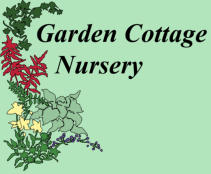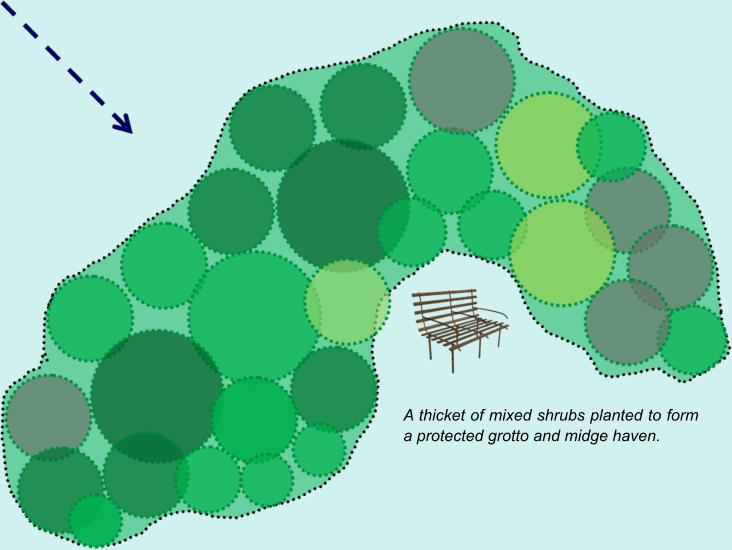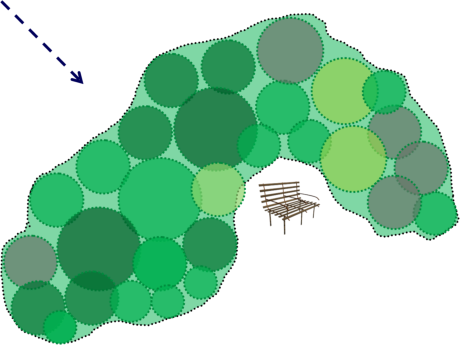
© Garden Cottage Nursery, 2022

Hedge Alternatives, Shopping
Tips And Best Plants To Use
Windbreaks and Hedges

Though most efficient, straight rows of a uniform variety are not to everyone’s taste. Should you desire you can mix up the
component species of your hedge, however remember different plants varieties will grow at different rates and in differing shapes,
so don’t expect straight edges. Mixing plants in runs will give a less snaggle-tooth effect, for example for a 20m stretch:

To go even more informal and more natural looking you can create sheltered areas by planting strategically sited and shaped large
thickets of irregular cloud shapes with the broadest side facing the most exposed quarter. Plant up with a mixture of various sized
shrubs and even the odd smaller, tougher tree in the middle with the hardiest most vigorous mainstays along the windward edge.
After a few years you can extend the planting leeward with more vulnerable plants.


So you’ve read all the above, paced out your plot, MADE IT DEER-PROOF, decided what sort of shelter you want to plant, now
what sort of plants do you buy?
We’ve been growing coastal shelter plants now for several decades and obviously we would like you to come and buy them from
us where we can advise you in person what will best suit your needs, but not everyone has the good fortune to live within
sensible driving distance of Garden Cottage Nursery, so here are some buying pointers:
•
There are no short-cuts. Plant young plants, only container grown, not containerised or bare-root plants, ideally in 2L or 3L
pots. Smaller 1L plants will need more watching over for their first year. With larger more than 3L plants and establishment
will be slower.
•
You can plant container-grown plants basically at any time of year on the West Coast, but planting from March to
September is best a they will face less gales to blow them back out of the ground again.
•
Don’t be afraid to experiment, but you are not a botanical garden or Tresco. So plant a good mixture of species, so all your
eggs aren’t in one basket, you don’t need to have one of every species, your garden will end up a busy mess, find a few
varieties that do well and use them as a backbone and decorate with others. Our coastal climate may be mild and allow us
to grow many more frost tender plants, but every few years a colder winter will come, so don’t go too all in with tender
treasures, particularly for shelter planting.
•
Evergreens are generally better than deciduous but a mixture is good to add seasonality. Evergreens will face more
battering in the winter but they produce new growth year-round so can replace burnt growth. Deciduous plants concentrate
their young growth in the spring so are vulnerable to May gales and their bare stems will provide less shelter in the winter.

For 40+ years we’ve been growing and selling plants for shelter on the West Coast of Scotland here are some of the best:








Move on to page 4 to see what plants we have available now that are suitable for planting in hedges and windbreaks.

Hedge Alternatives, Shopping
Tips And Best Plants To Use
Windbreaks
and Hedges

© Garden Cottage Nursery, 2021

Though most efficient, straight rows of a uniform variety are not
to everyone’s taste. Should you desire you can mix up the
component species of your hedge, however remember different
plants varieties will grow at different rates and in differing
shapes, so don’t expect straight edges. Mixing plants in runs will
give a less snaggle-tooth effect, for example for a 20m stretch:

To go even more informal and more natural looking you can
create sheltered areas by planting strategically sited and
shaped large thickets of irregular cloud shapes with the
broadest side facing the most exposed quarter. Plant up with a
mixture of various sized shrubs and even the odd smaller,
tougher tree in the middle with the hardiest most vigorous
mainstays along the windward edge. After a few years you can
extend the planting leeward with more vulnerable plants.
A
thicket
of
mixed
shrubs
planted
to
form
a
protected
grotto and midge haven.


So you’ve read all the above, paced out your plot, MADE IT
DEER-PROOF, decided what sort of shelter you want to plant,
now what sort of plants do you buy?
We’ve been growing coastal shelter plants now for several
decades and obviously we would like you to come and buy
them from us where we can advise you in person what will best
suit your needs, but not everyone has the good fortune to live
within sensible driving distance of Garden Cottage Nursery, so
here are some buying pointers:
•
There are no short-cuts. Plant young plants, only container
grown, not containerised or bare-root plants, ideally in 2L
or 3L pots. Smaller 1L plants will need more watching over
for their first year. With larger more than 3L plants and
establishment will be slower.
•
You can plant container-grown plants basically at any time
of year on the West Coast, but planting from March to
September is best a they will face less gales to blow them
back out of the ground again.
•
Don’t be afraid to experiment, but you are not a botanical
garden or Tresco. So plant a good mixture of species, so
all your eggs aren’t in one basket, you don’t need to have
one of every species, your garden will end up a busy
mess, find a few varieties that do well and use them as a
backbone and decorate with others. Our coastal climate
may be mild and allow us to grow many more frost tender
plants, but every few years a colder winter will come, so
don’t go too all in with tender treasures, particularly for
shelter planting.
•
Evergreens are generally better than deciduous but a
mixture is good to add seasonality. Evergreens will face
more battering in the winter but they produce new growth
year-round so can replace burnt growth. Deciduous plants
concentrate their young growth in the spring so are
vulnerable to May gales and their bare stems will provide
less shelter in the winter.

For 40+ years we’ve been growing and selling plants for shelter
on the West Coast of Scotland here are some of the best:






Move on to page 4 to see what plants we have available now
that are suitable for planting in hedges and windbreaks.

















